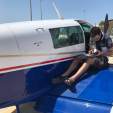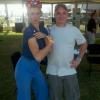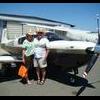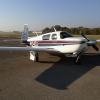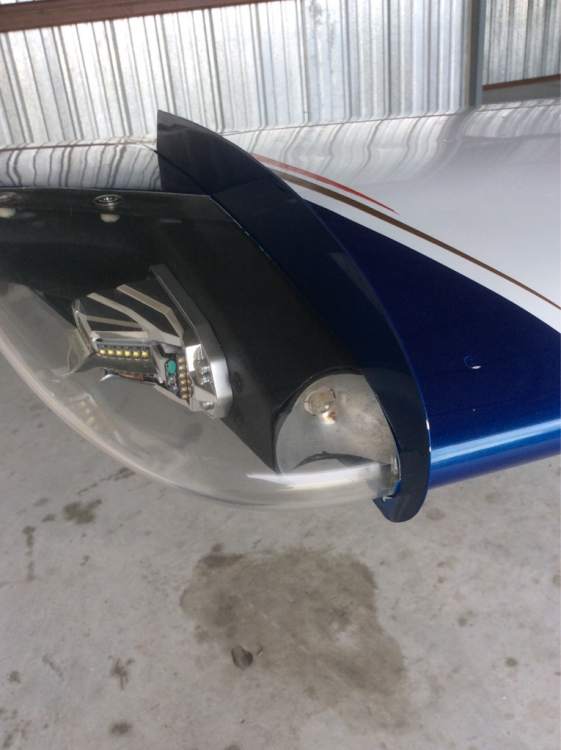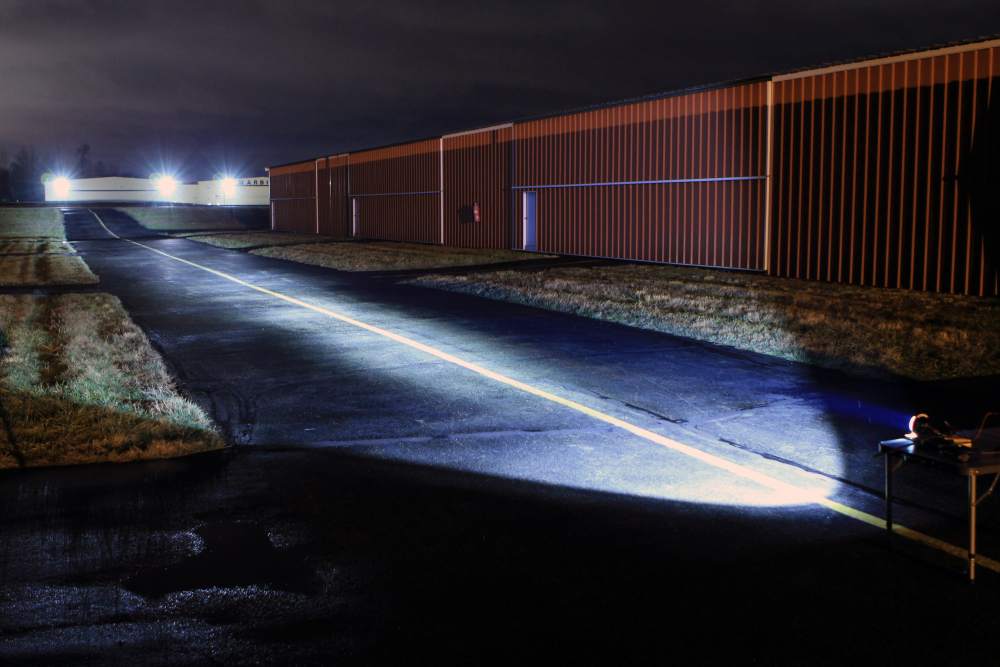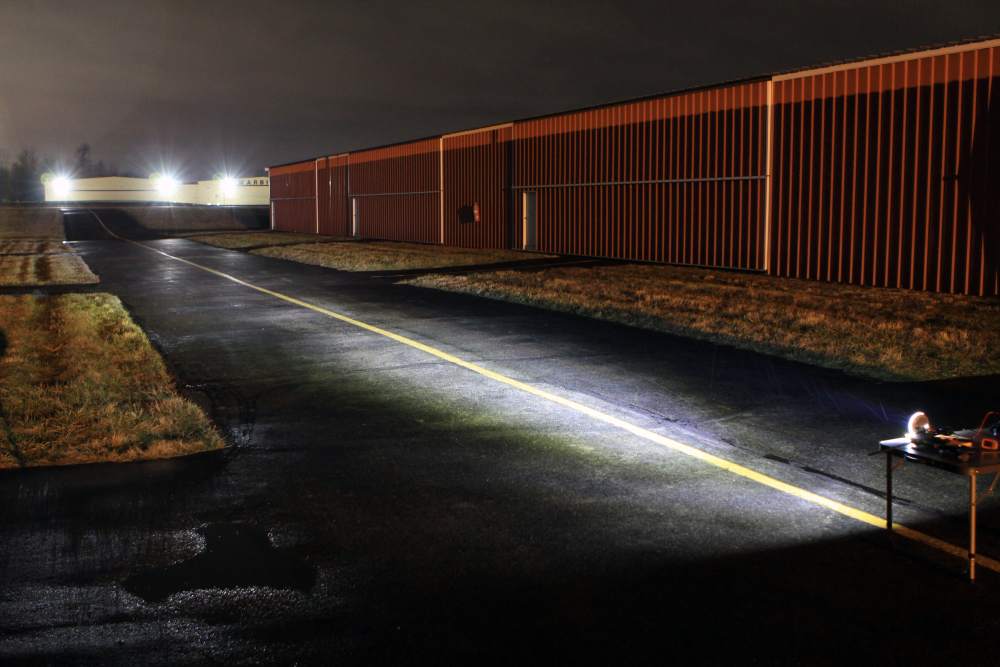Leaderboard
Popular Content
Showing content with the highest reputation on 05/18/2021 in all areas
-
I don’t think so. I’ve been flying my F in the southwest for 20 years. Just need to understand it’s a different plane when it’s hot.3 points
-
Yes, we should all be careful and not gear up our airplanes. But the reason being that it might increase everyone else's insurance rates a few dollars... is so far down the list of reasons that it's a complete waste of an otherwise good brain cell to even think about it. #firstworldproblems3 points
-
I have been reading the typical Cirrus cynical diatribes above with some mixture of amusement, disgust, and confusion. Here we are, as an ever diminishing GA population, bemoaning the lack of progress, stoic technology, and unwillingness for manufacturers to take a risk and better serve their markets. Yet, along comes Cirrus which has been successful beyond what any reasonable estimation would have been when they launched; they've bested all of their competitors...combined! But, rather than even a drip of praise we are regaled with denigrating comments such as, "thought like a scared spouse," and "pander to that irrational behavior". Maybe, just maybe, Cirrus actually analyzed, in an actual business sense (as opposed to wanton irrational speculation) as to what product would sell and grow the GA market...NAH, that couldn't be it <sarcasm> Then there's the barely veiled "no real pilot needs a chute (or now, the apparently popular slight, shute), and/or blaming bad decisions on the chute's presence. So, how many military pilots have one of these terrible devices strapped to their backs when they go flying (and, I'm not talking missions into battle)? It seems to me that common sense would say that if highly trained pilots, flying very well maintained aircraft, find that chutes provide a way to mitigate risk, then GA pilots in their machines might benefit as well. Ah, but THAT chute is strapped to their backs, not the plane's..and that makes all the difference, I guess <more sarcasm>. Let's throw in autopilots, GPS, and all glass for the ultimate in situational awareness and risk mitigation. Sure would think pilots with all that stuff may be making bad decisions because of having those items on board. Where's the Garmin bashing? But, that logic falls by the wayside, it would appear. Then we come to the plethora of 'statistics' where random unsupported numbers and speculative premises are tossed out as 'data', but only in the worst possible light; the unsupported nature of that speculation could just as easily be spun to support the use of chutes...but, you never are going to see that when Cirrus bashing is in full bloom! For equal hull values and pilot experience, I'd be curious how insurance rates for Cirrus weigh in. Oh, well. Cirrus keeps making money...and haters keep hating.3 points
-
Me, too. But I'm not up for scratch building one. In keeping with Clint Eastwood's advice, I know my limits . . . .3 points
-
From the POH there is only 0.6 knots margin on the stall speed for certification with the current 3368lbs. If you look at the overweight ferry SI (SIM20-133) you'll see the 15% over gross figure is 65KIAS which is not an insignificant speed to get back somehow. Whether the solution is VGs or modified flaps or something else will be up to Mooney. Also bear in mind the climb performance - particularly the Bravo with only 270bhp. You're going to use nearly 10hp just to carry up 400lbs at 500fpm, and that's before your consider the extra induced drag to overcome. From experience I can tell you that at gross and ISA+30 the climb is already rather anaemic! I wouldn't be surprised to see some sort of temperature limits applied. For takeoff and landing performance, it will be whatever it is - unless there's a whole new wing or new (more powerful) engine, then the TORR and LDR are just going to be more (you've got to accelerate all that mass) - if that means you need a 10,000ft runway, then it is up to the PIC to determine if it can be done. From the same SI there is also the +2.5G limitation, but as the normal category requires 3.8 then it wouldn't surprise me if anything more than a couple of hundred pounds increase involved a number of very expensive and invasive modifications, also worth a look at the SI to see the resultant W&B envelope might look like. Regulations also specify that MLW can be a minimum of 95% of MTOW so there's the whole gear issue already mentioned - the existing 3368/3200 is using the full extent of the allowance. Tailplane limitations will be interesting - supposedly the long bodies are already close to the limit with a forward CofG and full flap, with extra limitations if icing has been encountered. Unless a significant CofG limit is applied, then this might require a new tail and elevators, maybe even a whole empennage? The price continues to go up.... I'm not in any rush, but would probably be interested in a 200lb increase. If there was a 400lb option for $$$$ and a 200lb option for $$, I wouldn't look at the 400lb option, on the basis I already have near as dammit 1000lbs available, and: a) If I'm going somewhere with four 200lbs adults, you can pretty much bet that after 3 hours one is going to need to pee, and everyone will be ready to stretch their legs (unless you are four masochists). In any case, you wouldn't pile four large adults in a mini to drive cross country for hours and hours without a break so why do it in a Mooney? At 90lbs/hr of fuel, then 1200lbs usable even gives a small amount of baggage! b) A couple of my regular routes go near super cheap fuel - 1200lbs usable means I can pickup full (Monroy LRT) fuel (730lbs) with two adults and long weekend bags3 points
-
There was a recent thread on DA that I was browsing here on Mooney Space, and I felt compelled to start a new one. We're quickly moving into the season where density altitude will become an issue to contend with. Please note that I am not a CFI, but a pilot based at a high altitude airfield in mountainous terrain who has flown thousands of hours in my Mooney in these conditions. Density Altitude is the silent, invisible killer. I have seen many an accident caused by DA. The #1 way to ensure that you're not one of those statistics is avoidance. The #2 way is to get a mountain checkride BEFORE you head into the mountains on your own. Don Kaye out here on the west coast can do that for you. I am based at TRK. Every single airport in this region has it's unique attributes, but Truckee is by and large the most challenging. We deal with updrafts, downdrafts, wind shear, high winds, crosswinds, terrain, thermals and all of that mixed in with density altitude. I took off this morning to practice some landings. At 0830 the DA was in excess of 7,000' Other airports in this region are easier to deal with, but each has its challenges. The Nevada side of the state line is notorious for turbulence. Lake Tahoe Airport is probably the easiest to operate out of, and it has the most runway outside of Reno. But the terrain spooks a lot of people there. Here are some pointers for those who venture into the mountains and have to deal with density altitude. Fly early morning when it's coolest; don't load up on fuel; don't go out at maximum gross weight; fly your airspeeds, plus a few knots for safety's sake; expect to land long; expect to use more runway on departure; fly over the terrain as high as possible; you're speed over ground will be faster than you are accustomed to on the runway and in the pattern - fly your airspeeds, don't be fooled by visual clues; watch your temps - with less "air" you're oil & CHT temps will rise quicker and won't fall so easily; lean your mixture for best performance (normally aspirated engines); don't make shallow or steep approaches, stablized approaches on or slight above speed are best; don't try a short field landing in a density altitude environment. One of the things I noticed years ago is that your airspeed will bleed off quicker than normal and your stall will occur faster than usual - you have less lift and less air density, so this makes perfect sense. Do NOT fly behind the power curve under any circumstances; we had a couple of airline pilots we lost a few years back who did that, we couldn't find them, but eventually spotted the plane short of the runway about 1500' from the threshold in the scrub. The suspicion is that they were low, slow and behind the power curve, just flew it into the ground as the aircraft caught the downside of a thermal on short final. Mountain flying is very rewarding, and it can be a new challenge for many to overcome. When you head up into the mountains, we want you to visit again and visit often. The best way to do that in your Mooney is to have a mountain checkride before you load up the bird and fly up the hill.2 points
-
In searching online for an Excel version of the KOCH chart I came across this website. You can put the information in or just put in the Airport Identifier. I don't know how it works on an iPhone but on an Android you can go to it in Chrome and pin it to one of your home screens. https://www.takeofflanding.com/ Example of what you see on the website:2 points
-
He wasn't a real flatlander. He was DPE in CRW and Commander of WV Air National Guard. Not flat, but not as high as W. CO.2 points
-
And change all 3 at each annual. Its slightly safer and if you can't afford it take up boating. -Robert2 points
-
Not all 345s gave integrated GPS. If you have a compatible GPS source, such as the 530, it'll use that instead, so when you turn the 530 off, the 345 has no location information to give you traffic. That's my guess.2 points
-
I’ve done it in my F as well. Just don’t pull back to your usually pitch attitude on take off. Give it some time but it flys.2 points
-
it’s Going to be a great event! Special parking for the V-tails though... Best regards, -a-2 points
-
2 points
-
That's correct, but neither would 23"/2700 rpm at take off. It only stimulates the loss of power. Anyway. High altitude stalls and slow flight have been an eye opener my students... So I wanted to share that with the group...2 points
-
One of my goals with this thread is to do a COMPLETE and reasonably high QUALITY overhaul and illustrate what that involves and the costs associated with doing it right. It certainly has been an educational experience for me so far, as I hope it will be for everyone following along. The project is in limbo as I am still waiting for an update from AWI on my motor mount. They are backed up in their work due to their recent move and an increased demand for their services. Additionally, the engine overhaul itself is still in the first half of the quoted “ten to twelve weeks” process. Who knows if the crankcase or crankshaft will pass or need to be replaced? Some potentially large ticket surprises may still be lurking out there. Even though I am working on a multi-engine rating and dealing with multiple home maintenance and home improvement projects as well, I sure do miss flying my airplane. It leaves a hole in you when you want to fly your plane and you can’t.2 points
-
I've been lucky. Learned to fly in New England. Then 20 years in Denver. Now in the southeast. It all seems normal to me,2 points
-
When you send yours to McFarlane and ask them to duplicate it, it can fall under one of the processes that are accepted for Owner Produced Parts. You can make a log entry yourself regarding the OPP process (be sure to read, understand, and follow the regs/ACs on OPP), and then your A&P/IA can install it under a separate log entry. Nope, not FAA approved. See the disclaimer in the signature block of the drawing that 1964-M20E posted above. It gets installed as an Owner Produced Part, so the OPP process requirements should be followed. I've done two like this. Even as an A&P I can't produce the part, so I make a logbook entry for the OPP as owner/operator, and then a separate entry to install it as an A&P.2 points
-
Thanks Carusoam & Rocket! Although my build has slowed to a crawl I'll do my best to keep this forum populated. My passion for Mooney's began last summer while visiting a local airport where an old Mooney is displayed out front of the main building. Legend has it, that it was "Acquired" from a hanger left unattended. The story seems to change depending on who you ask. Anyway, my initial thought was similar to many others; how could someone reverse the empennage on an aircraft and it actually flies?!? This was also during a time when my passion was running pretty high for the Beechcraft V35. But the Mooney has taken front & center. There have been many GA RC models manufactured, repeatedly, and in various sizes such as the Cessna 182. But it doesn't appear that the Mooney took hold, which is too sad. I periodically check various forums for RC builds for the Mooney and particularly, Mooney's for sale, and they're pretty sparse. However, I recently stumbled upon Christian's maiden flight N205ME plus his build of that aircraft. He did a great job building it and it was cool watching him maiden it. More later...2 points
-
I finally had the time to adjust the configuration of the GTN750. I confirmed that the avionics shop left the GTN Terrain options on the TerrainProximity selection, and as we don't have any other display for Terrain Warnings, it was wrongly configurated and we weren't getting any terrain message at all. So, I reset the Terrain Options to TerrainAlerting, and now everything is working just fine! I finally get initial message "Terrain System OK", and also the Terrain Warnings, and the "500'" callout. On next flights I will try to get the warning message for steep descents. Thanks to all for your help, and specially to RMag that cleared gave the solution, avoiding me to spend time and money on a travel to avionics maintenance with a shop that should have left this working since day one. In attach you can see the videos of the reconfiguration, and the terrain alerts I now get as a renewed happy costumer of GTN750 IMG_3622.MP4 IMG_3729.MP42 points
-
2 points
-
Do change that tire right away. Do consider Desser Monster retreads on Goodyear Flight Custom cores for the mains- the best tread life, much lower cost without sacrificing anything. (Desser regular tread for the nose - otherwise creates an issue clearing wheel well). Don't change the other tire. Zero benefit. Pointless expense if it still has decent tread on it. Don't use nitrogen. Trivial benefit for small plane tires. https://www.aviationconsumer.com/maintenance/nitrogen-tires-unnecessary-for-small-aircraft/ Do change the tube at the same time. Consider Michelin airstop tubes - way more benefit in terms of holding pressure than using nitrogen. Do add "heels on the floor!" to your prelanding checklist on final and this will never happen again (I learned the hard way as a noob just like you)2 points
-
Chris included a video of a flight at the end of the thread... and on YouTube.... (way cool!) -a-2 points
-
I’d bet money it doesn’t have a clear coat, clear coat is a recent thing for aircraft and that paint doesn’t look recent. You can tell by taking a rag with a little lacquer thinner on it and rub the paint, if it gets color on the rag, it’s not clear coated. Yes it can be fixed sort of, at least you can restore some of the shine, it will last as long as the wax lasts, if kept hangered quite a while. To buff a airplane I use a Makita buffer, not a random orbit polisher, that will take forever. Don’t use compound unless you know what your doing, use a fine polish, yes it will take longer but your far less likely to cause damage, with compound you can damage paint very quickly. ‘This buffer has a newer model is all, pretty much the same, you can see I bought the machine glaze to polish my Mooney after I bought it Best idea is find an old car even a junkyard car or an old boat to practice on, then do the airplane once your comfortable Get the foam pads too, the wool cuts faster than foam does. After it’s polished I like Collinite fleet wax, it’s old school airplane and boat carnauba wax Oh, beware of miracle paint restorers / rejuvenators, it’s going to take work, but the polishing machine will make it a whole lot easier1 point
-
That's what I would do. There are ribs in the tank bays that stuff can hide behind. Perhaps something got into the tanks when the replacement wing was off. Ultimately, you might have to open up the inspection covers on the top of the wing to really inspect and clean everything out. Skip1 point
-
The three P's of marketing. Product-Price-Promotion. A fair product, well promoted can fetch a good price. A poor product, cheaply sold may need no promotion. A mediocre product, well promoted may in fact common a high price. It's not the bait on the hook, it is how you bait the hook.1 point
-
I cannot tell if the sealant is amber but the sides of the tanks appear amber in color, almost like an overdone treatment of alodine. The sealant at the joints can best be described as "dark", color or tone is undeterrable.1 point
-
Indeed, it's hard to measure that conditional bit for planning & execution, there is moral hazards in planning and not much data in flying, maybe one can get the data on some simulator? At least all chute pulls I know about in the UK, all happened in very benign weather & terrain conditions: sunny day burger run over flat terrain, so a bit far away from the mountains fling with 800m RVR and 200ft ceiling at night, anyway no one flies this scenario regularly... I tend to rent SR22 & DA42 for the FIKI option, as M20J is pretty naked, the strategy is the same as M20J: avoid icing like plague, climb through in 5min or go back and land or left/right, de-ice is bloody expensive to cruise on all the time, the same about the draggy chute or the greedy twin It will be interesting to know about the extreme environments where chute & twin are required and look at the logbook to see how many flights are done in these? I doubt people who claim a huge benefit of chute & twin for regular flying in UK (or in sunny flat Florida) actually cross North Atlantic on every day in winter or fly the Rockies every night? so the incremental amount is very small Outside the extreme environment scenarios, the main benefit some pilot friends have from chute+twin is it keeps them flying with their families (wife & kids) & pax who are skeptical, it's very good that they have an aircraft to keep GA flying going, that would not have been possible in a Cessna, Piper or Mooney One has to keep in mind that there are some residual risks, I make no joke that EFATO at 250ft is flown the same way in Astir Glider, M20J, SR22, DA42, this risk is present on every takeoff I accept from unfamiliar places, only at 300ft where I would notice that it's a "reckless decision to takeoff", the only choice is wing level on slow speed to trees & built up areas ahead, one has to be happy with that or fly in 9000ft runways !1 point
-
Wow! Great follow-up Costa! Fantastic Pirep for @Rmag! Wonderful videos! Great to see things working well! Best regards, -a-1 point
-
Hard feelings are often shared... There is a running count of how many Mooneys have had GU landings each week.... Most often, it is Mooney pilots that are not members of MS... Insurance rates have gone up over the last couple of years... and insurance companies were happy to mention that GU landings are part of that increase... It is probably 3$ for everyone... where the increases were more in line with $300... but, there are entirely different reasons for the increase.... the 737 Max took some blame for GA insurance increases too... the two big planes, and loss of hundreds of lives... completely dwarf GA losses... And half of those losses... really didn’t have to happen... same problem, different day.. There are a number of challenges that Mooney pilots are going to endure... it is important to know about these things some how... I recommend joining MS... and become part of the conversation... it takes the fear out of things before they happen... Finding Jerry and Alan in a pre-MS environment was not easy... a friend of a friend knew something about Jerry’s business... it took me a month to make contact... There are many strategies and pieces of hardware to minimize the risk of having another GU landing... read about them...share them... Make the change to improve your odds of not having another.... If following the standard procedures often taught with Transition Training.... There are three Gumps checks.... where the G is for gear.... you have three opportunities to undo a simple omission... There is a green light to indicate the gear and the ship is ready for landing.... There is this horrible droning Bee buzzing in your ear above your head.... so distracting, you feel uneasy about landing while that is going on... Share with your friend... the word ‘distraction’... this is the word that gets used to describe how a good pilot can miss so many cues... It is proof... GU landings happen to human beings... because, they are human... There are quite a few things that get covered in Transition Training... The GU landing is the barely important one... there are a few more important than that... If you think scraping the belly is expensive... review the syllabus for TT... +1 For Alan giving so much detail related to GU repairs... PP thoughts only, not a mechanic... Best regards, -a-1 point
-
1 point
-
Good point! Every time I climb the ladder to fuel the 172, I think about the Grumman Cheetah I once had and long for a C model like my Dad owned.1 point
-
1 point
-
@philiplane makes many good points that are all worth checking out before getting it done. After 100 hours the engine should have bedded itself in well enough to balance, but if you are going to do GAMIs, then I would suggest you get this done (or at least do the test to determine if you want to do them) before balancing the prop (or be prepared to balance it again!) I had mine balanced a few years ago and very pleased with the improvement, but having changed the engine it is overdue to be done again1 point
-
I announced my retirement and will be calling it quits in March. A trans-con trip in the J is the first bucket list item and my wife and I plan to take three to four weeks, making many stops along the way. My plan calls for a southern route to California, then up the coast to Seattle and eastbound through the Rockies on the way to Maine. Given this itinerary, what is the ideal time of year to go?1 point
-
Thanks Anthony. Turned out my whole trip from CO-AL was entirely VFR. Just as a test I tried to fly like I was IFR and I generally kept it within +/- 100 ft with a couple of lapses. It was so tiring, especially during that second leg when the turbulence started reaching my altitude. The Brittain altitude hold will be such a relief! The "AI" with the Brittain system is a tiny differential in static and reference pressure across a thin membrane. Brilliant system. Very similar to how the German V-2 "buzz bomb" maintained altitude. Like that system, the Brittain system will provide exactly the wrong control inputs when inverted. Legend has it that some brave allied pilot's started flipping the buzz bombs over with a wingtip, which caused them to nose-dive from an inverted position into a stall and crash. Not sure how much truth there is to that story but fun to recount. Data forthcoming, hopefully not from an inverted recovery. -Fred1 point
-
This all came out of my bother-in-laws Cherokee 6. All was working nicely before he decided to go all glass panel. To set the price I looked at same items on eBay and Barnstormer and then went a little below to hopefully sell quickly. If someone can show me that I priced it too high make a serious offer and I’ll reconsider. For regular Mooneyspacers it all comes with a guarantee . If you don’t like it you can return it and I’ll give you your money back. Sent from my iPad using Tapatalk1 point
-
1 point
-
I have a full set of belly skins , I have new , and used gear doors , and plenty of flap hinges , and fairings , flaps too , if you need them... Insurance will base a total off of a 30% return on salvage , Meaning that if the plane is insured for 58000 , they will write a check for up to 40600.00 Your plane is not totaled...12 K for a teardown , 12 k for a prop , 12 k for labor , and belly repairs ... You should be way under total , If by some miracle , you come in over 40.6 K , you can have them buy out their liability for the 40.6 K and be on your own... An old C will never bring 18 K at salvage auction , plus there are costs of storage , and transport , that the insurance will want to get out of.... I do this for a living , Just sit back , and see where you are at , If you get Close , People like me and Jerry , can supply the parts cheap enough , to save it ... Good luck.. Also if you don't buy it back , at auction , I just might buy from the insurance auction , and rebuild it ...1 point
-
Lawsuits....vacumn pump fails while IMC,pilot not current partial panel,grave yard spiral with all onboard deceased,multi million dollar verdict against vacumn pump mfd and anybody else associated with it.Mfd liabilty insurance explodes to cover potential liabilty as multiple torts have proven vacumn pumps driving the sole attitude instrument unsafe.1 point
-
IIRC when you specify length or have McFarland make them to length, it falls under "owner produced"1 point
-
There are things done to prevent a flat or a blow out... like replacing when the tire is as pictured There are things done to make people feel good, such as replacing in pairs if the other is still good (assuming good tread depth, no flat spots, not old enough where the rubber is cracking on the sidewalls). When I see a tire like the above pic on an airliner, it gets changed right away. Does the one next to it get changed? Do the other 5 tires get changed? Nope! Do what you like, but there is absolutely no need to replace in pairs. We're not le mans racecars here needing equal tires for maximum cornering. And I have to echo what carusoam says about technique. If that happens, a mistake was made. Its ok we all do it. I tried a short field the other day, applied very light brakes going too fast, sqeee.... I caught it before any damage was done, but it was a reminder, no need to do that. Absolutely no need. And also a reminder to use proper foot positioning when landing. That is, the toes should be at the bottoms of the pedals, heels on the floor. The feet need to move up to brake. Reminds me of showing my mooney to a pilot friend, a big guy. I had him fly left seat. Hard to see where his feet were positioned during taxi. "Why do you need so much power to taxi this thing?" he asks. "Are your toes on the brakes?" I say. "No, I'm sure they aren't". Lightbulb moment right there... his toes were in fact on the brakes. I'm so glad we got that sorted out on the taxi out vs landing.1 point
-
1 point
-
I am a Whelen Aerospace Technologies (WAT and formerly Whelen) authorized dealer. For your tail light, I have the Orion 500, which is a white LED navigation light and white LED strobe light. For your wingtips I have the Orion 650E, which has a red or green LED position light and white LED strobe light. As part of the installation you remove the strobe power supply but you can repurpose your existing wiring. Install time is probably a couple hours by an A&P. The lights are FAA TSO approved as an approved night position light and an anti-collision light system. The pathway to installation is a logbook entry as a minor alteration by your A&P. For your landing and taxi lights, assuming they are in your wings, they are the PAR-36 size (4.5 inches in diameter). You could do two Parmetheus Pro LED landing lights and a Parmetheus Plus taxi light. The Pro is one of the best LED landing lights out on the market and below are a photo comparing it to a lower end Aerolite PAR-36. The Pro projects the light like a spot light while the Plus taxi version is more of a flood like to more widely illuminate the area around he aircraft for taxi. Some folks decide to go with four Pros too. 1-833-425-5288 <-- Call me here gallagheraviationllc.com <-- Email me here https://www.gallagheraviationllc.com/whelen-aircraft-lighting.html <-- My website PAR-36 Parmetheus Pro PAR-36 Parmetheus Plus1 point
-
While SJ is correct that unpressurized mags are going to have issues at high altitude, they would work just fine in a vacuum! It turns out the arc potential reaches a minimum and then begins to INCREASE as the pressure continues to decrease; see Paschen curve: https://en.wikipedia.org/wiki/Paschen's_law1 point
-
Many of us who have hangars, got them before the airplane. A hangar is a lot harder to find than the airplane.1 point
-
1 point
-
Unless there’s some reason to not buy a Skylane, buy a Skylane. Fast enough, super capable, simple systems, easy to maintain, land damn near anywhere, take whatever you want. Probably inexpensive to insure. Alway has had strong resale, because it does it all. If 80% of my flying didn’t significantly benefit from extra speed and I didn’t fly enough miles in the year to notice the fuel savings, I’d trade the Mooney in a second for a 182. I’ve been all over the west coast in my E, and a good 182 is close to 90% the TAS in cruise. Burns a bit more doing it of course on 230 hp. So my average trip of 450 nm would take something like 20 min longer in the 182. And in the Cessna you could take the wife, kids all their stuff and fuel and be comfortable.1 point
-
+1 on disconnecting the cable at the governor. That should isolate whether the resistance is in the cable or the governor. They're not easy to get at, but it's a good start to diagnosing.1 point
-
I have a damaged M20C built in 1965 with a good engine, it can maybe your solution.1 point
-
The supplied screws fit the baseplate, but not the aircraft, the ones required to fit the aircraft, #6 I believe will require you to counter sink the mounting plate, that can be done with a drill bit, but it won’t be the correct angle, but it will work. ‘It sounds to me like your phone or whatever your using is not connecting via bluetooth to the device, try to pair it again. If memory serves there is also a time limit to pair the device after it’s tuned on, and you can’t use the app when in the flight mode, which I’m pretty sure uses ground speed to determine flight mode. So far as old equipment, I originally had a 41 yr old KT-76A and it worked fine, I recently put in a 76C and as far as I know it still works, but I have not done the flight test,but have flight followed and if it didn’t work, I expect they would have said something. As far as anonymous mode, according to Jax approach when I was squawking 1200 he said all he got was the letters VFR, but surely there is a way somehow that you can be identified, I don’t believe it’s truly anonymous just as Onstar etc in automobiles etc can be remote activated and “ they “ can listen to conversations as well as track you. https://www.forbes.com/sites/thomasbrewster/2017/01/15/police-spying-on-car-conversations-location-siriusxm-gm-chevrolet-toyota-privacy/?sh=67df7c202ef81 point




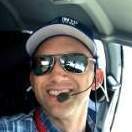
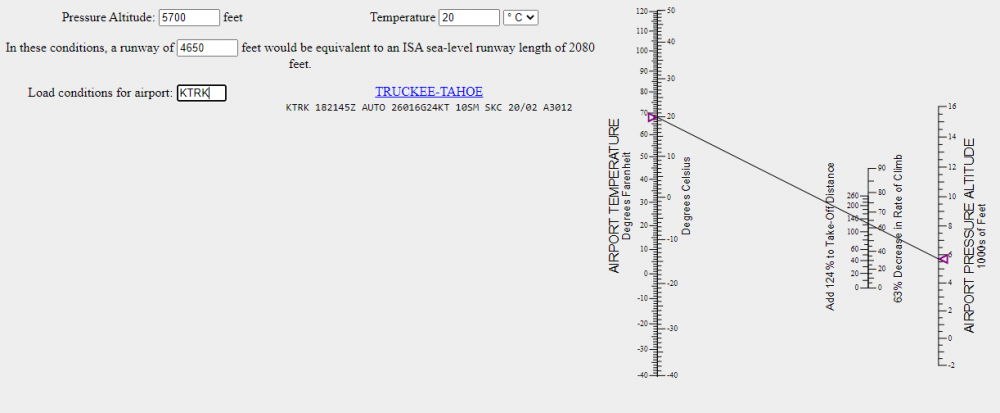





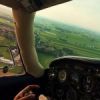
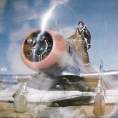
.thumb.jpg.44bc5ad17b44ec09b48bdca2a82f7a76.jpg)
